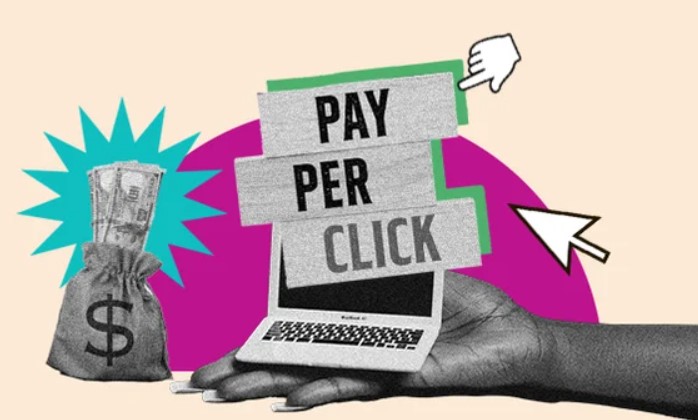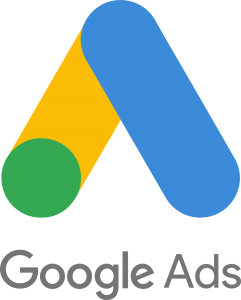In today’s digital age, your business needs to be where the eyes are, and currently, they’re glued to screens — scanning through websites, watching videos, and more crucially, searching for information. That’s where paid search, or Pay-Per-Click (PPC) advertising, comes into play. It’s not just about getting your name out there; it’s about understanding when and how to make your pitch to potential customers. Buckle up as we dive deep into the multifaceted world of paid search.
The Fundamentals: Deciphering Paid Search
Let’s set the stage by first addressing what is paid search. Imagine you’re the captain of a ship, and the vast ocean you’re navigating is the Internet. Paid search is akin to having a lighthouse that guides potential customers—lost at sea—to your shores. It involves buying advertising space within search engine results, so when someone searches for terms related to your business, your ad is likely to appear. This ad space is purchased via auction-based systems, where you bid on relevant keywords to ensure your advertisement gets prime visibility.
However, it’s not enough to just buy the space. Your ad needs to be compelling enough to induce clicks. That’s where paid search management comes in. It involves not only bidding for the right keywords, but also optimizing the ad copy and landing pages to ensure that the traffic converts.
Paid search engine marketing can be compared to an orchestra. It’s not about one instrument, but how all instruments come together to create harmony. When your keywords, ad copy, and landing pages are in sync, you create an environment ripe for customer conversion.
An integral part of the entire setup is PPC search. PPC stands for Pay-Per-Click, which means you pay a fee every time someone clicks on your ad. The beautiful part? You’re not paying for the ad to merely appear; you’re paying for actual visits to your site.
You might be thinking, “Well, why not just focus on organic search?” While organic reach is crucial, paid search fast-tracks you to the front of the line. Paid search strategy is about immediate visibility and quick results. It’s like skipping the queue at a popular nightclub—you may have to pay a cover charge, but you’re right where the action is.
Unfurling the Banner: What is Paid Search Marketing?
Let’s move our attention to what is paid search marketing. It’s not just about appearing on search engines, but doing so effectively. It’s the difference between a street performer juggling three balls and a Cirque du Soleil artist juggling flaming torches while balancing on a tightrope. Both are juggling, but one is undeniably more captivating.
PPC search engine marketing takes it a step further. It combines the precision of PPC with the extensive reach of search engines. In a nutshell, you’re not just buying clicks—you’re buying potential relationships. With PPC search engine marketing, your advertisements have the ability to reach a wide audience while targeting very specific search queries.
The allure lies in its flexibility. A paid search advertising campaign can be highly customized to target different demographics, times of day, and even types of devices. In the digital arena, it’s the equivalent of casting a net that only catches the fish you want.
So what is paid search ads? They’re the actual text or visual advertisements that appear when people conduct searches. These ads are typically short, but packed with essential information like your business name, a brief description, and a call-to-action.
Lastly, paid search is a dynamic space. With real-time data, your paid search PPC campaigns can be adjusted even while they’re running. It means that you can tweak keywords, update ad copy, or allocate budget to the most successful ads. In this fast-paced digital world, this real-time adaptation is priceless.

Piecing It Together: Paid Search Marketing Definition
Sometimes, the terminology can get overwhelming. So, what’s the paid search marketing definition? In simple terms, it’s the act of gaining website traffic by purchasing ads on search engines. But as we’ve discussed, it’s much more nuanced than that.
At its core, paid search marketing is an umbrella term that encompasses several sub-categories like keyword research, ad creation, and bidding strategy. These elements coalesce to form a comprehensive approach to leveraging the power of search engines for your business benefit.
If you’re still wondering, “what is a paid search,” think of it as a toll road on the information highway. You pay to be on it, but it’s faster, more direct, and free from the ‘traffic’ of organic search results.
In essence, paid search strategy is about making informed decisions based on analytics and performance metrics. It is a far cry from merely paying for visibility. It’s about paying for performance and results.
And why use paid search? Because, in the vast digital marketplace, standing out is not a luxury, but a necessity. Paid search allows you to do precisely that by putting you in front of customers who are actively looking for what you have to offer.
The Elements of Strategy: Crafting Your Paid Search Campaign
One cannot simply leap into the realm of paid search without a blueprint. That’s akin to building a skyscraper without an architectural plan. It’s not just about having the raw materials (your product or service); it’s about knowing how to assemble them into something awe-inspiring.
The first step involves keyword research. Choosing the right keywords is crucial because these are the terms that your potential customers are typing into search engines. Remember, you’re not just fighting against your business competitors; you’re also competing against a sea of information. Keyword optimization is your first line of defense.
Next, there’s ad creation. The art of crafting a compelling ad is akin to being a wordsmith. Every character counts, and each word must pull its weight. It’s not just about selling a product; it’s about telling a story that resonates with your target audience.
Budget allocation is a vital part of the strategy, too. It involves not just how much you spend, but where you spend it. This is where paid search management earns its stripes. By analyzing performance metrics, a manager can redistribute resources to the highest-performing ads.
Tracking and analytics are the unsung heroes of any campaign. It’s like having a backstage crew that ensures every element is in its rightful place, working seamlessly to produce a stellar show. These tools allow you to refine your approach, making data-driven decisions that move the needle in the right direction.
Finally, there’s the art of timing. An ad at the right time can be the difference between a curious click and a scroll past. Understanding your audience’s online behavior patterns can provide invaluable insights into when to launch your ads for maximum impact.

Scaling Heights: Advanced Paid Search Techniques
While the basics provide a robust foundation, there’s a whole universe of advanced techniques that can skyrocket your campaigns. For instance, ad extensions allow you to add additional information like business address, phone number, or even links to specific pages on your website. This is like having an elevator pitch where you not only say what you do, but show how well you do it.
Then, there are different bidding strategies that extend beyond the basic cost-per-click (CPC). Strategies like Enhanced CPC and Cost Per Acquisition (CPA) offer advanced ways to manage your investment and target your desired outcomes more accurately.
Another advanced technique is using Dynamic Search Ads. These are automatically generated ads based on the content of your website. This is like having a personal stylist who knows your entire wardrobe and can assemble the perfect outfit for any occasion.
Seasonal and event-based campaigns also offer exciting avenues for creativity. Imagine having a special Valentine’s Day ad that targets lovebirds looking for the perfect date-night restaurant or a Christmas campaign offering special holiday discounts.
Lastly, consider retargeting strategies. It’s not just about the new customers, but also about those who’ve visited your site, but haven’t converted. It’s like having a second chance at a first impression, which is a rare and valuable opportunity in the marketing world.
Future Projections: The Evolving Landscape of Paid Search
Like any other technology-based field, the realm of paid search is ever-changing. Machine learning and artificial intelligence are already making inroads into how campaigns are managed. Soon, we might have self-optimizing campaigns that require minimal human intervention.
Voice search is another frontier that’s quickly gaining momentum. As voice-activated assistants like Alexa and Siri become household staples, the way people search is evolving. This will invariably affect keyword strategy and necessitate new approaches.
Local search is also becoming increasingly significant, especially for brick-and-mortar businesses. The rise of “near me” searches indicates a growing trend of people looking for local solutions, which is an avenue ripe for paid search exploration.
Emerging platforms are also worth watching. While Google remains the giant in the room, platforms like Bing and DuckDuckGo offer additional avenues for visibility. It’s like playing not just on the main stage, but also taking your act to smaller, yet equally relevant, venues.
Finally, ethical considerations are becoming more prevalent. Transparency in advertising and data protection are issues that are coming to the forefront, and future campaigns will need to adhere to stricter guidelines.
Fine-Tuning: The Role of A/B Testing in Paid Search
The realm of paid search isn’t a “set it and forget it” kind of deal. Think of your campaign as a high-performance sports car. It’s designed to be fast and effective, but it also requires regular tune-ups to achieve optimal results. This is where A/B testing comes into play, serving as the diagnostic tool to fine-tune your advertising engine.
Firstly, what is A/B testing in the context of paid search? Essentially, it involves running two different versions of an ad simultaneously to see which performs better. For instance, one version of the ad could feature a pricing discount, while another focuses on customer testimonials. The metrics garnered from the performance of both ads can provide invaluable insights into consumer behavior and preferences.
However, the nuances don’t stop at just comparing two ads. A/B testing can extend to different elements within the ad, such as headlines, images, or call-to-action phrases. This granular approach enables advertisers to isolate specific factors and measure their impact, thereby offering a roadmap for future campaigns. It’s akin to being a gourmet chef, tweaking the ingredients and cooking methods until you concoct the perfect dish.
Another fascinating aspect of A/B testing is its ability to reduce risk. Rather than committing to a single strategy that may or may not work, you can test multiple tactics and allocate resources to the most effective one. It’s similar to diversifying an investment portfolio; spreading the risk can lead to more consistent returns.
Conclusion
In summary, paid search is not merely an advertising tactic, but a comprehensive strategy that requires thoughtful planning, precise execution, and continual optimization. Whether you’re a fledgling startup or a seasoned enterprise, investing in paid search can propel your brand into the spotlight, helping you reach your target audience more effectively.
In this fast-paced digital world, where everyone is vying for attention, paid search provides a targeted, flexible, and measurable way to get ahead. And as we look towards the future, it’s clear that this dynamic field will continue to evolve, offering new opportunities and challenges alike.
So, why do you need paid search? Because in the cutthroat arena of modern business, it’s not just about being seen. It’s about being found. And paid search ensures that you’re not just a needle in the digital haystack, but a beacon that guides your customers home.


